What is the best martial art for self defense?
A lot of people’s motivations for taking up martial arts in the first place is of course to be able to defend themselves.
As there are many different styles of martial arts available to learn, how do we pick which one is best for the purpose of being able to defend yourself?
In my opinion there are three key factors one should consider when taking up martial arts for self defense.
Of course if your intention in taking up martial arts is to get fitter have fun and meet new people and learn new skills then just about any martial art will be able to do this for you.
But if your intention is to be able to defend yourself through martial arts then, below are three key questions you should be asking before you settle on choosing a self defense martial art to train and study.
- Is size important?
- Are the techniques applicable in real life situations?
- How difficult is it to learn?
In looking at these three factors we can also discuss several popular martial arts that are practiced and how they stack up when you factor in these key factors.
But first let’s look at each of these factors in a bit more detail.
1. Is size important?
When it comes to self defense and real life situations often times the most vulnerable are those who are physcially smaller and weaker.
Then when selecting a martial art for self defense it’s very important to consider how they treat the issue of size.
In virtually all competitive sport martial arts, size and especially weight are extremely important factors.
All competitive sport martial arts have weight categories. So when applying your techniques and strategies you have trained in a fight or competition they will be applied against someone who is basically the same weight as you.
Whether it be muay thai, boxing, kickboxing, MMA, Judo or BJJ, they virtually all train for sports competition where there are set rules. A major rule is that competitors need to be in the same weight class.
However out there in the real world there will always be someone who is bigger, heavier and stronger than you.
So, in considering how to defend yourself it’s important that what you train and learn can be applied against bigger, heavier opponents or attackers.

If you are already a well trained athlete or perhaps you have developed a strong physique with above average muscular size and development and above average strength, then you already have somewhat of an advantage when it comes to self defense.
But for the average person size, weight and strength are important factors in self defense and you should consider whether the martial art you choose incroporates techniques and strategies that can be used effeectively against larger stronger attackers.
Unfortunately due to nature and physical attributes that differentiate males from females, women are almost always going to face bigger, heavier attackers in a self defense situation.
Boxing, Muay Thai, Judo, MMA, and BJJ all have weight classes and are focused on competing and applying their techniques against those in the same weight class.
2. Are realistic self defense situations considered?
Again in competitive sports martial arts there are rules such as not allowing groin strikes, eye pokes, biting or use of weapons.
There is also the use of protective gear such as gloves to protect the hands. groin protectors and mouth guards.
In Tae Kwon Do competition there is also head gear and body padding worn in competition.
All such protective gear most likley will not be used in a self defense situation.
So while sporting competition martial arts are definitely tough, a lot of the realism of self defense is not really integrated into the training or competition.
Also in competitive martial arts it’s understood from the initiation of a competition that both are ready to go and prepared to face each other.
In the real world however, you can be blind sided, sucker punched and attacked when you are least prepared.

An attacker may grab you from behind, confront you with a weapon such as a knife or knock you to the ground before you even have a chance to react.
Therefore having this real world application also is vital for self defense. This aspect should be firm in your mind when choosing a martial art for self defense.
In sporting competitions a match will not begin until the referee says go and both competitors are ready. In self defense attackers will try to attack when you are least prepared to engage i.e from behind. The use of weapons is also a major factor that should be considered in self defense martial arts.
3. Complexity and Level of Difficulty to Learn
Another important factor is the complexity of the martial art you want to learn.
It would be better to select a martial art that includes natural movements and often the less complex the better.
Simple techniques are more favorable as in a self defense situation and with the sudden release of adrenaline, you will forget all your techniques and resort back to the most simple and natural movements.
Therefore complicated moves and moves that require a lot of dexterity, flexibility and a high level of accuracy to execute may not be the best for self defense. Also such martial arts techniques take many years of dedicated training to execute well in a combat situation.

For the average person who is not looking to go the Olympics for Judo or Tae Kwan Do or to be a world champion boxer/kickboxer, we just don’t have the time to put in to learning and training.
Again if are someone who has good athleticism, flexibility and dexterity, then you have a lot more options when it comes to selecting a martial for self defense.
But for someone who has not that athletic or flexible, the best self defense martial art for you would be one that relies on natural movements that require less dexterity and flexibility and that have relatively simple to perform techniques.
Spinning kicks, multiple strike combinations and jumping attacks require serious training for a long time unless you are already very athletic, flexible and coordinated.
So Then Which is the Best Martial Art for Self Defense?
The aim of this post is not to give you a definitive answer as each person is different with different levels of strength and athleticism.
I only wish to point out that when it comes to self defense, what you see in the movies or even in sporting competitions such as the UFC is not fighting in the purest sense as it is in a controlled environment.
In the movies there are a series of choreographed moves and often the flashiest moves are used as it looks good on screen but these are not the best in real life situations.
So in considering the three key questions discussed lets look at how some of the most popular martial arts stack up when you consider each of the three questions.
1. Boxing
| Is size a factor? | Realistic self defense situations | Learning Difficulty |
| Yes Boxers compete in weight classes | Focused on punches only Attacks from behind, grabs and knock downs not trained | Fairly simple techniques but high level of conditioning needed which takes a long time to develop |
As a pugilistic art, boxing has been around since ancient times.
It has a highly developed system of punches and punch defense and strategies to use.

Self Defense Benefits of Boxing
- Punches are common forms of attacks in a self defense situation so being able to recognize and defend or avoid punches is beneficial.
- Boxing is a sport where sparring and competing is important. Actually applying your techniques in sparring or competition is definitely beneficial for self defense as one of the most important factors in to be able to stay calm and composed under fire.
- Boxing is mandatory in military institutions such as the United States Marine Corps (USMC) as it teaches you to stay calm and remember your training in combat situations.
Shortcomings in Self Defense
- Focus is on punches mainly
- Weight classes are very important so techniques are not taught to be successful against bigger, heavier opponents.
- Training is for competing in a ring with rules and protective gear such as gloves as well as timed rounds.
- No weapons self defense techniques or surprise attacks or grabbing attacks are trained or considered.
2. Krav Maga
| Is size a factor? | Realistic self defense situations | Learning Difficulty |
| No | Used by Israeli Defense Forces. Focus is on combat rather than sports | Mostly simple and effective techniques |
As a military self defence and fighting system used by the Israeli Defence Forces, Krav Maga originally was developed by taking simple techniques from Western boxing, wrestling and street fighting to be incorporated into a fighting system.
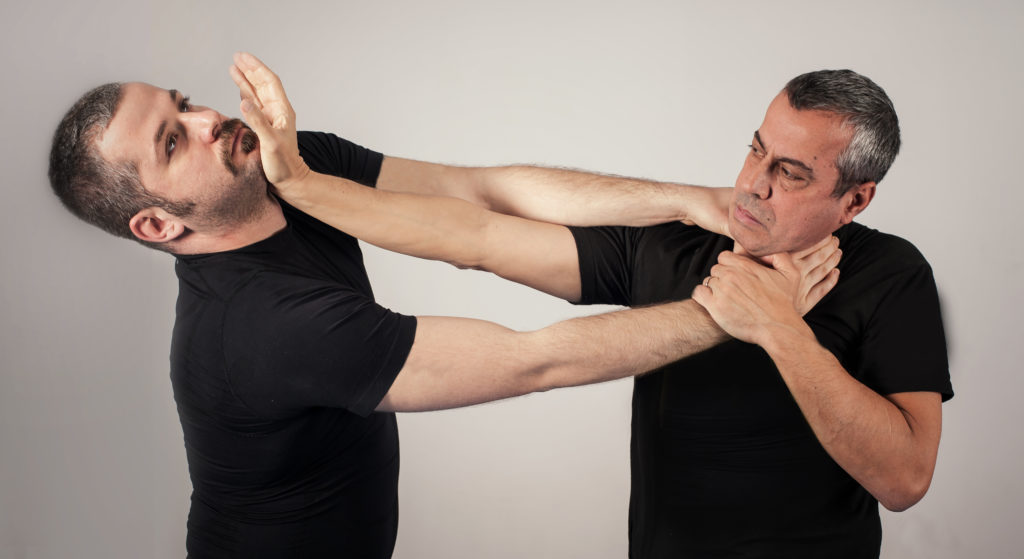
Self Defense benefits of Krav Maga
- Krav Maga was developed and is taught and trained for real world fighting. It is taught as a no rules combat system.
- Attacks to the vulnerable points of the body are trained to quickly incapacitate your attacker and make your escape.
- Situational awareness and being able to be observant and take note of your surroundings and identify threats before an attack occurs is also a part of Krav Maga.
- Simple and effective techniques suitable for males and females that can be learnt in a relatively shorter amount of time
Shortcomings in Self Defense
- Training the techniques is scripted and predictable. As the vulnerable points are targets, there cannot be full on sparring with the full arsenal of Krav Maga techniques. As such you cannot practice all your techniques against a resisting opponent.
- Inflicting maximum damage on your attacker is effective with Krav Maga but striking vulnerable points may cause more damage than you want to and will have to answer for in a Court of Law.
3. Brazilian Jiu Jitsu
| Is size a factor? | Realistic self defense situations | Learning difficulty |
| Yes in competition | Mostly sport focus | Medium to High level of difficulty |
Brazilian Jiu Jitsu or BJJ is a very popular martial art today.
The origins of BJJ are Judo with the focus on grappling, takedowns and throws as well as pinning techniques, joint locks, chokes and strangle holds.
Unlike Judo BJJ places a much greater focus on ground work over the takedowns and throws that Judo is famous for.
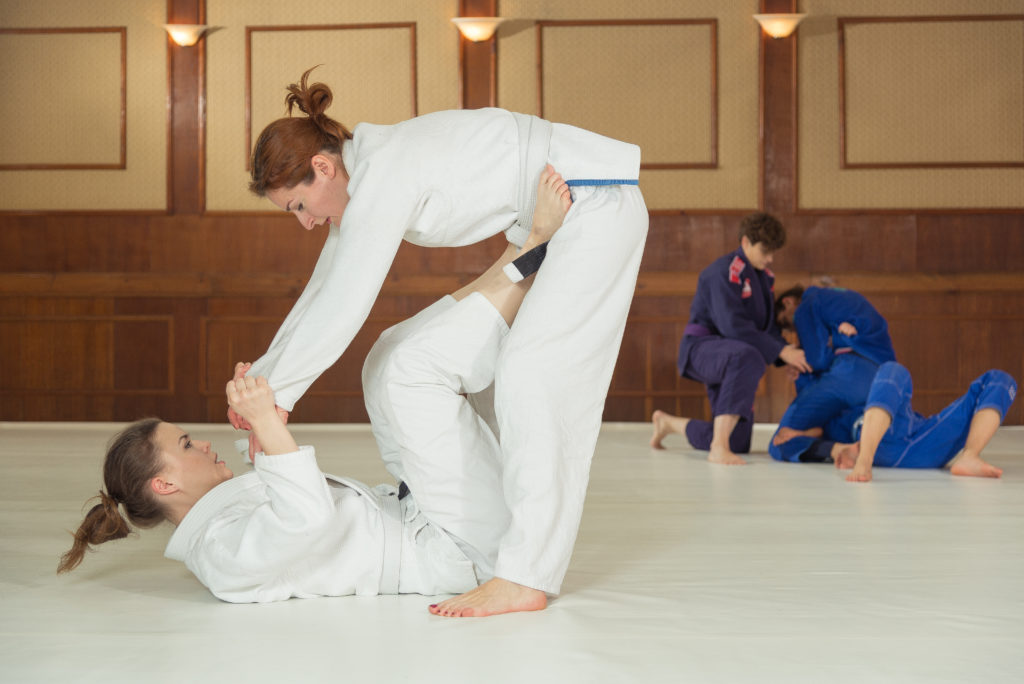
Self Defense Benefits of BJJ
- BJJ places great emphasis on ‘rolling’ or sparring and all techniques can be applied with full force and speed.
- Hard but relatively safe sparring practiced regularly conditions BJJ practitioners to stay clam and execute techniques in combat situations which is beneficial for self defense.
- Leverage is a key aspect of BJJ and thus the techniques can be used against large, heavier attackers.
Shortcomings in Self Defense
- Most BJJ schools are focused on sports competition and a lot of the techniques developed and practiced for competitions are not applicable in self defense situations. Tournament techniques such as the worm guard, 50/50 and others really won’t be applicable in self defense but similar BJJ tournament techniques are trained a lot by BJJ schools.
- Realistic self defense situations can be neglected depending on the BJJ school. This includes weapons attacks.
4. Gracie Jiu Jitsu
| Is size a factor? | Realistic self defense situations | Learning Difficulty |
| No | Yes as self defense is the main focus | Low-Med with a focus on natural body movements |
Gracie Jiu Jitsu was the original from of BJJ introduced to the world through UFC 1 and Royce Gracie’s famous victories. UFC 1 showcased Grace Jiu Jitsu as an effective unarmed combat art against different styles of martial arts.
With a focus on distance management, takedowns and ground techniques and ending with submissions, Gracie Jiu Jitsu differs from BJJ in that sports Jiu Jitsu and tournaments are not the focus.
The Gracie family and their schools emphasise the self defense applications of the art.
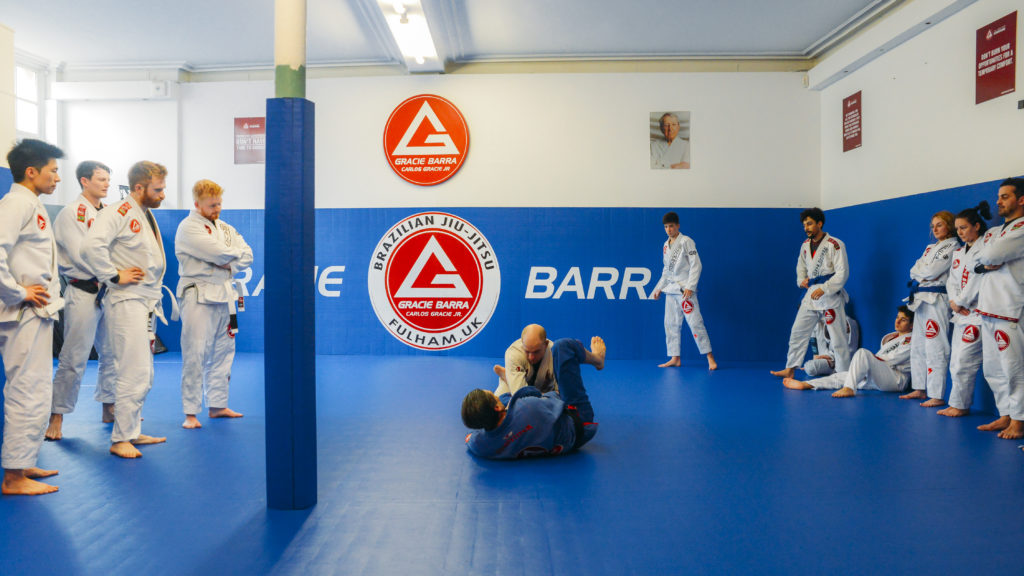
Self defense Benefits of Gracie Jiu Jitsu
- Real life situations such as weapons attacks, grabs from behind and sucker punches are all considered and trained extensively in Gracie Jiu Jitsu.
- Distance management is very important and trained from the beginning
- Utilizes leverage based techniques so it is suitable to be used against larger and heavier attackers
- Hard sparring is also included and thus practitioners can apply their techniques against fully resisting opponents/partners
- Natural body movements are the focus
Shortcomings in Self Defense
As getting the attacker to the ground where leverage can be used over size and strength, this is not the best strategy against multiple attackers
5. Wing Chun
| Size a factor? | Realistic self defense situations | Learning Difficulty |
| No | Fighting style with no sporting competition focus at all | Relatively simple movements |
Wing Chun is a southern Chinese kung fu style and one of the most popular Kung fu systems practiced in the world today.
Wing Chun is not a sporting or competition martial art and thus the system is based in real world combat.
Wing Chun is known for close range combat and hand trapping techniques. There is a rich history and well developed fighting theories and self defense applications.
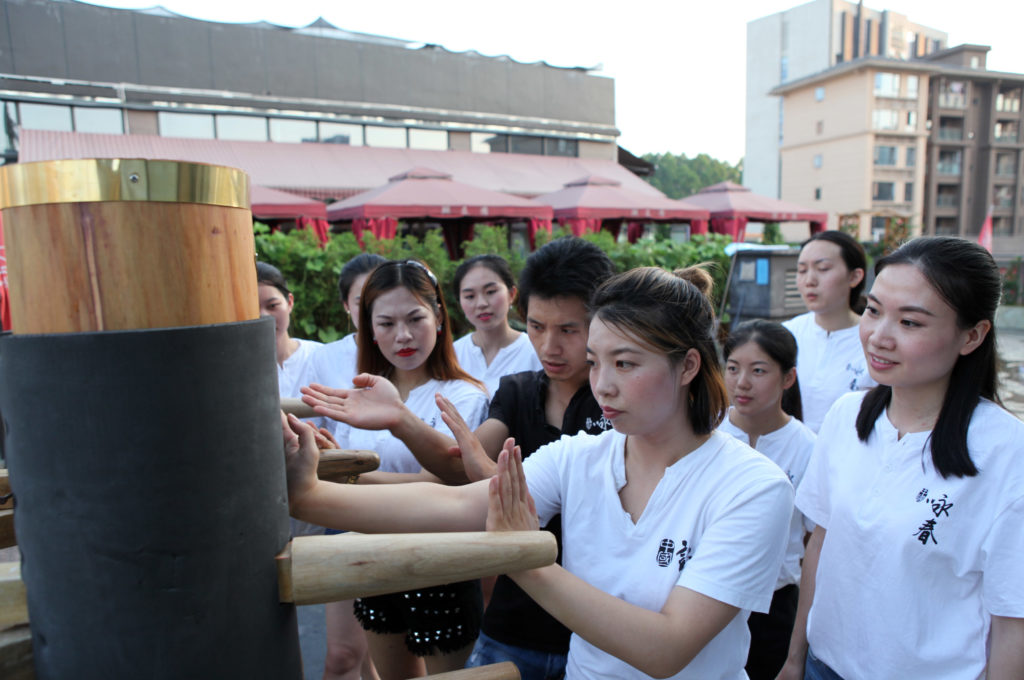
Self Defense Benefits of Wing Chun
- Size and strength are not emphasized with a focus instead on body structure and natural movements.
- Wing Chun movements are simple and the system was designed to be learnt by ordinary people in a shorter amount of time than other southern kung fu systems such as Hung Gar.
Shortcomings in Self Defense
- A major focus on punches with little focus on grappling and defense against grappling type attacks.
- As the focus is on punches and attacking an opponents center line with straight punches, weapons and defending against weapons attacks are not trained.
- Common self defense situations such as bear hugs, chokes, and getting knocked to the ground are not focused on to any great extent.
6. Muay Thai
| Size a factor? | Realistic self defense situations | Learning Difficulty |
| As a sport with weight classes – yes | Combat focus but many self defense scenarios not trained | Fairly simple but requires high level of conditioning |
As the Art of 8 Limbs, Muay Thai has its origins in the ancient wars and battles of Thailand.
As an unarmed combat system, Muay Thai striking has been integrated into systems such as MMA and Krav Maga, showing the effectiveness of this martial art.
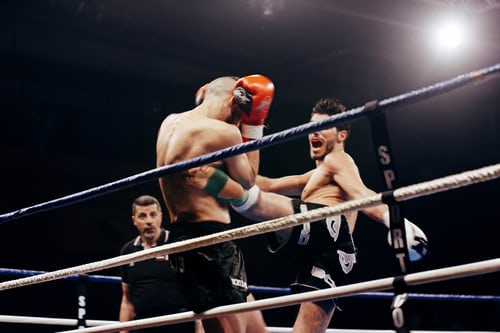
Self Defense Benefits of Muay Thai
- The techniques of Muay Thai are based on real combat used by Thai soldiers on the battlefield. Knees and elbow still can be used effectively against attackers or larger size.
- Sparring and fighting in Muay Thai develop a strong and composed mindset in a stressful situation such as facing an attacker outside the ring or gym.
- The Muay Thai clinch and upper body grappling is also highly applicable in self defense to throw knees and elbows or to take down your attacker and escape.
Shortcomings in self defense
- Muay Thai is mainly a sporting competitive martial art focused on technique used in the ring under rules and weight classes with protective gear such as gloves.
- Weapons attacks and self defense situations such as bear hugs and chokes are not trained.
- Once knocked to the ground Muay Thai fights stop and reset which is not a real life application.
7. MMA
| Size a factor? | Realistic self defense situations | Learning Difficulty |
| Yes as sport is the focus | Fighting focused but common self defense scenarios not trained. | Higher level of difficulty. |
Mixed martial arts has a much shorter history than the other styles discussed here. However it’s effective as an effective fighting art cannot be denied.
Utilising a mix of striking and grappling, ground techniques, MMA is probably one of the most fastest growing martial arts styles in the world today.
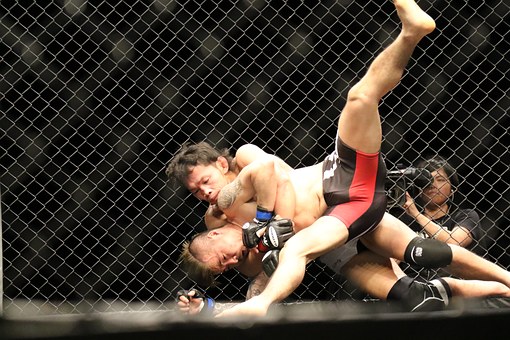
Self Defense Benefits of MMA
- In terms of unarmed combat, MMA trains to use and defend against a full range of striking and grappling techniques.
- Hard but safe sparring allows MMA practitioners to practice their techniques and forge the composed and strong mindset that has been discussed previously in this post.
Shortcomings in Self Defense
- Focused on competition and sports fighting under rules and with protective gear
- Common self defense scenarios and weapons attacks not trained or considered
8. Tae Kwon Do
Tae Kwan Do is a Korean martial art literally translated as ‘Way of the Foot and Fist’. The origins of Tae Kwan Do lie in the Chinese and Japanese martial arts of Kung Fu and Karate.
The emphasis is on fast and agile kicking techniques but punches are included as well.
Tae Kwan Do also is an Olympic sport and is one of the most accessible martial arts as there are schools in many countries across the world.
| Size a factor? | Realistic self defense | Difficulty level |
| Yes as it is mainly sport and competition based | Self defense is included but not the main focus | Flexibility and dexterity required |
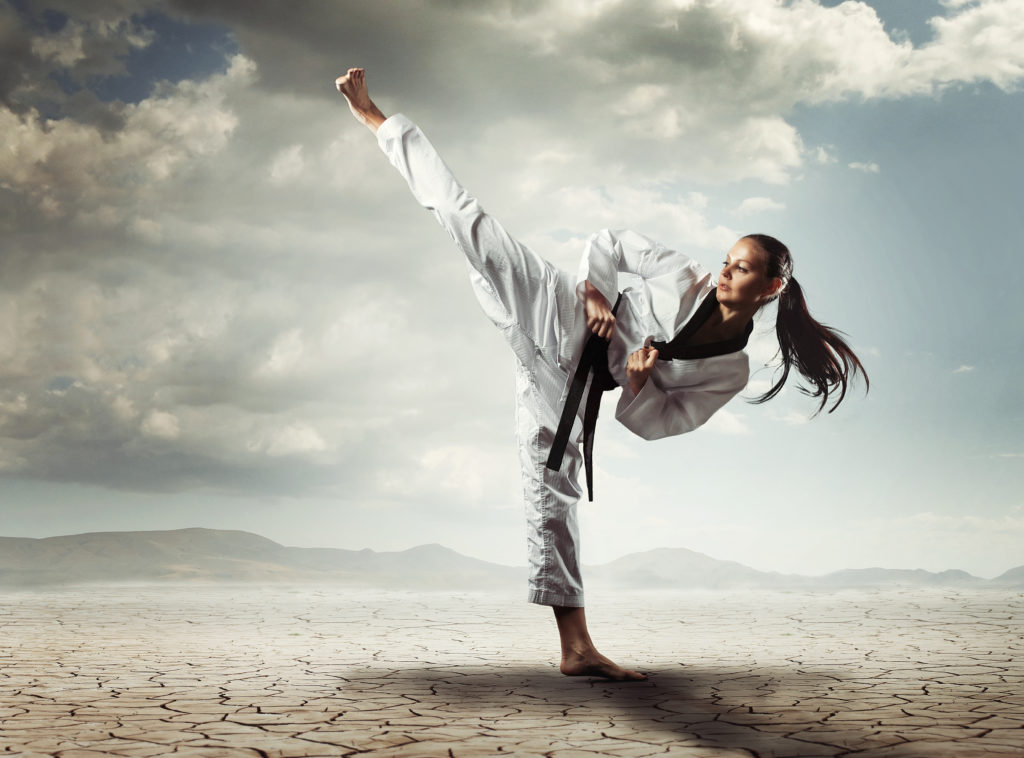
Self Defense Benefits of Tae Kwan Do
- Hosinsul of self defense is included as part of Tae Kwan Do but the level of training depends on the school you train at. It includes weapons and common attacks such as punches.
- Sparring and competition or gyeorugi 겨루기 or matseogi 맞서 is a form or practicing your techniques against a resisting opponent and also staying composed and calm in a combat situation.
Shortcomings in Self Defense
- Mainly trained as sport or competition as the focus. And as such protective gear, rules and high scoring techniques that may not be self defense applicable are the focus.
- Require years of training to execute the favored kicking techniques with accuracy and power against an attacker.
- Self defense aspects are not the focus and a trained as pre-determined or scripted forms.
9. Judo
| Size a factor? | Realistic self defense | Difficulty Level |
| Yes for sports | Many self defense common situations not trained | Fairly high |
Developed by Jigoro Kano with its origins in the samurai art of jiu jutsu, Judo has its origins in the battlefield and combat arts.
Striking is not trained and the focus is on competition techniques which include throws, take downs, pinning techniques and submissions such as arm locks and choke holds.
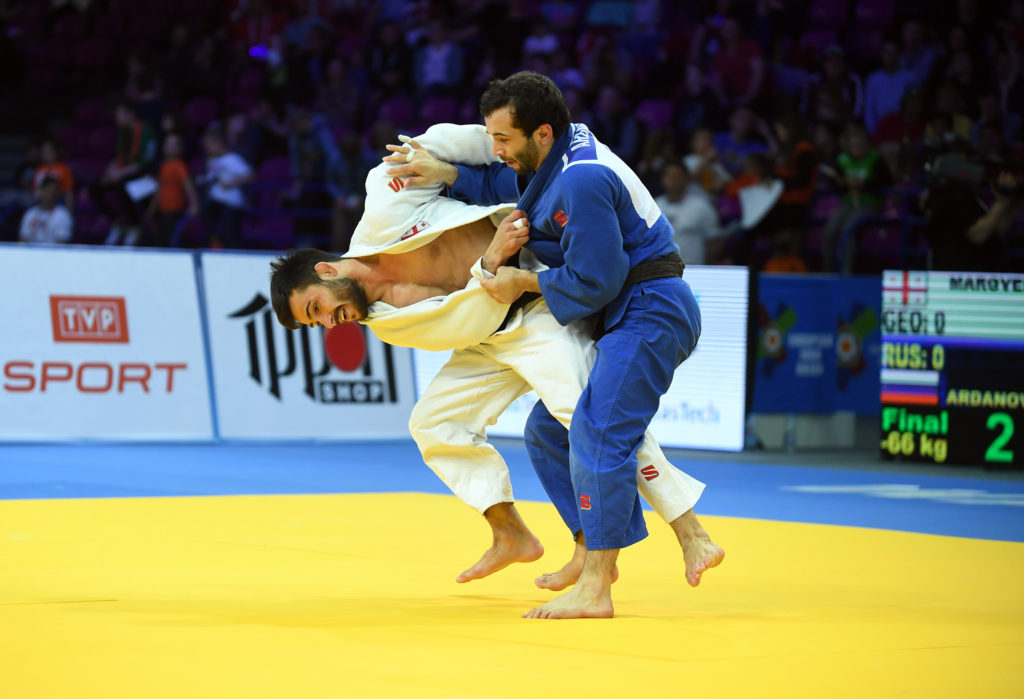
Self Defense Benefits of Judo
- Randori or free sparring is key to judo training and allows the practitioner to execute their techniques against a fully resisting opponent.
- Using the larger muscles of the legs and also hips and breaking your opponents balance to execute techniques, Judo can be used against larger, heavier opponents.
- Self defense against common unarmed attacks and weapons such as staffs and daggers are included as part of the ‘Goshin Jutsu’ kata.
Shortcomings in Self Defense
- Self defense techniques are rarely trained as sport is the focus. The goshin jutsu is usually only performed at higher levels of black belt.
- Strikes are not included at all in the vast majority of Judo schools.
Summary
So what is the best martial art for self defense?
The main three questions you should be asking yourself when choosing a martial for self defense are:
- Is size a factor?
- Are realistic situations considered and trained?
- How complex and difficult is it to learn?
I have presented here 9 popular and recognized martial arts with the aim to show the weaknesses and benefits of each in light of the three questions above.
In the end it is difficult to say one of these is the best for self defense as there are so many situations and considerations to factor into a self defense situation.
fighting and self defense can take a turn in any direction and can involve bigger attackers or more than one attacker. They may have a knife or a broken bottle as a weapon and you may be completely taken by surprise.
It’s my opinion that martial arts can be divided into those that focus on sports and competition and those that are focused on fighting and combat. Both have their value and both can provide numerous benefits for the practitioner beyond fighting and self defense.
There are too many martial arts in the world today to say that one is the best.
But if you ask yourself the three questions above and pick a martial art that you can stick to and train consistently I think you are in a better position that not learning any martial art or self defense at all.



